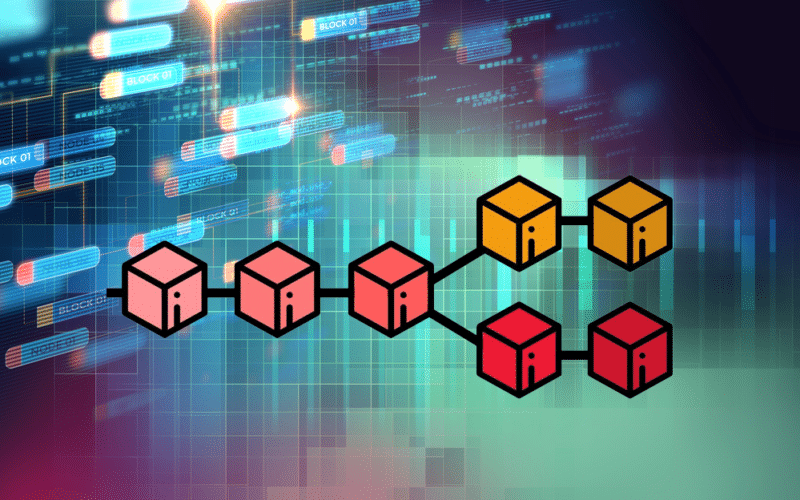‘Forking’ is a word that commonly comes up in discussions of cryptocurrency. You’ll see it a lot, especially when discussing Bitcoin, Ethereum, or Cardano.
When a blockchain network undergoes significant upgrades to its operational mechanism, it may produce different variations of the original software makeup known as forks. As the source code is available, everyone knows how the network is constructed. In addition, this means that any user can offer suggestions for updating and fixing the code. Many cryptocurrencies allow users to use open source software for testing new improvement ideas. Software changes can be introduced to the blockchain by utilizing this functionality.
In a disagreement between two mining groups, they may opt to install new software, but that leaves them without consensus because they’ve each installed distinct software. Thus, when their software diverges, they both have forked. The miners will be able to choose whether or not to stick with the blockchain in use already. This leads to the establishment of two copies of the blockchain until a unanimous agreement is reached.
The working mechanism of forks
Forking a blockchain involves adding code alterations to the protocol. People generally identify the creation of new forks with the minting of new tokens. The most common method of producing new crypto coins is to start from scratch. Alternatively, you can create a ‘fork’ on the current cryptocurrency blockchain.
This technique includes using an existing code base and modifying it, after which it is launched as a new token. Once the network has been constructed from scratch, convincing people to adopt the new coin is another issue entirely. Litecoin was an early example of this strategy, being a modification of the Bitcoin code.
Forking is possible on the already existing blockchain. This technology allows the introduction of new code on an existing blockchain without completely re-developing that code. There will be two blockchains created, each of which will have a version of the code with which each party is attempting to outdo the other.
Hard fork
Following an upgrade, new forks are created, which split the network into differentiated blockchains. When this form of forking occurs on a specific blockchain, it creates a slew of new cryptocurrencies that are distinct from the original blockchain.
The introduction of incompatibility resulting from a hard fork protocol upgrade results in the inability of the new blockchain to access the data from the old blockchain. Therefore, the older nodes won’t be compatible with new blocks, forcing the network to rely on new code that only takes new blocks from the network to continue operating.
An upgrade in the form of a hard fork consequently creates an insurmountable divide between the blockchain and its earlier version. This means two blockchains would be operating off a different software version even if there isn’t consent to release the updated version.
An excellent instance to consider is Bitcoin, which had a hard fork due to disagreements within the Bitcoin community over which route to take to scale the network.
Many people regard hard forks as risky, as they tend to result in chain splits. When the nodes in the network and the miners supporting it diverge, the resulting vulnerability leaves the network less secure.
Soft fork
A soft fork is a protocol modification that makes it backward compatible with previous versions of the protocol. The previous standards can be adhered to with the new fork since they fit into the existing protocol requirements. The older nodes still may both produce blocks and remain connected to the network.
In this instance, the new blockchain is the one to validate transactions. For the time being, nodes that have not received an update will continue to treat new blocks as valid. Nevertheless, existing nodes will be unable to identify new blockchain nodes due to the updated software.
Many miners must upgrade to pull off a soft fork successfully. An improvement in network security is expected to follow as more miners embrace the new standards.
What are their differences?
Other than through a hard fork, there are other methods of updating cryptocurrency software. Soft forks are a safer alternative to hard forks, and because they maintain backward compatibility and work with old nodes that have not been upgraded, they are widely accepted.
A soft fork introduces new functionality into a blockchain without affecting the blockchain’s code itself. Many software upgrades are accomplished with soft forks.
One analogy to help comprehend the distinction between hard forks and soft forks is to consider an operating system upgrade like the transition from Windows 7 to Windows 10. All programs on the device will continue to work with the new OS after the upgrade. In this circumstance, a hard fork would mean replacing the entire OS with a completely different one like iOS.
In summary
Blockchains are open-source technologies that are decentralized and do not rely on a central authority. It follows that changing the protocol necessitates getting the permission of all network users. Forking a blockchain is the technique needed to keep it up to date or even upgrade it. Forks are further classified by their function, which leads to a classification of soft and hard forks.








